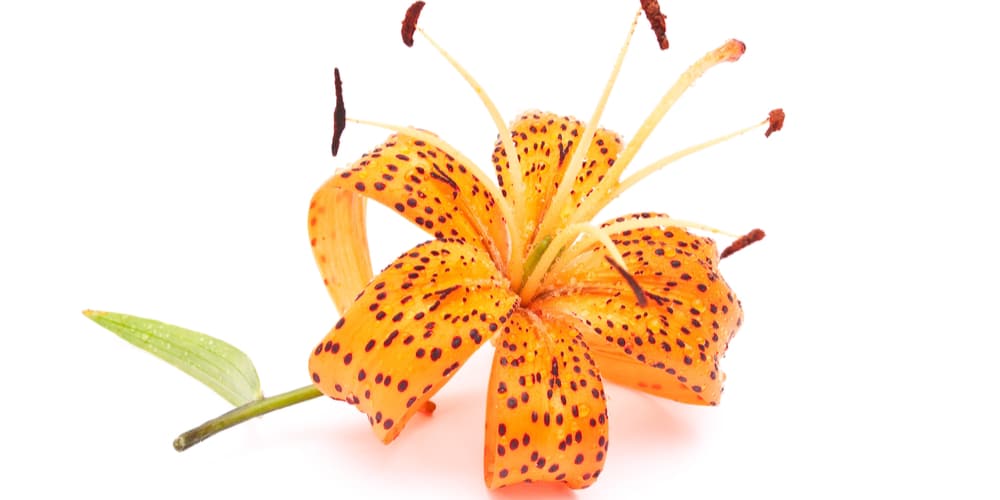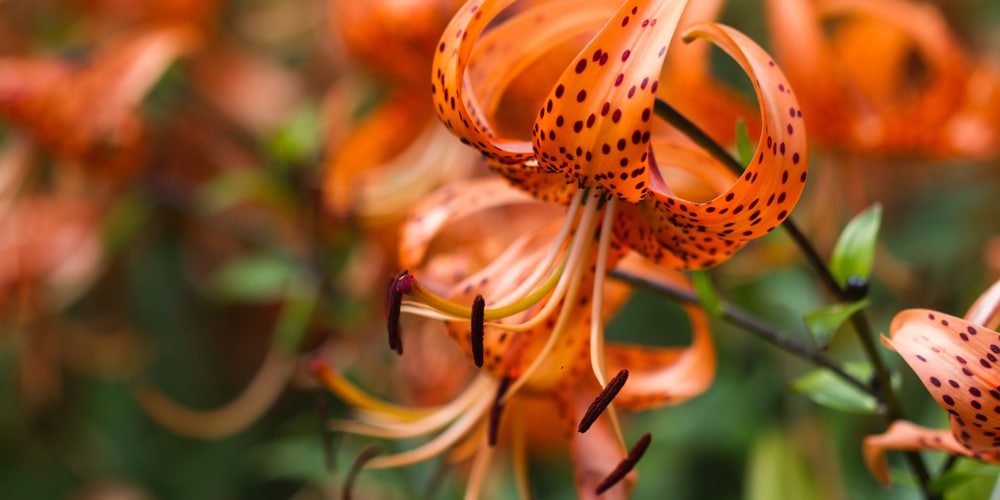Tiger lilies are bright-colored stunning perennials that grow from bulbs. Under proper conditions, these plants produce several blooms that show themselves by mid to late summer. Indeed, compared to other species of lilies, the tiger variety is more prolific. That’s good news if you like to enjoy a summery garden for as long as you can.
The plant’s name comes from the bright orange petal and the dark spots that resemble the animal. While seemingly delicate, this plant is not hard to grow and doesn’t require much attention from your side. All you have to do is ensure you provide full sun and moist, well-draining soil. Plus, don’t forget to carry out a pH test before planting tiger lilies: these plants thrive in slightly acidic soil and won’t do well in alkaline environments. Make sure you can fulfill their requirements before adding them to your garden.
With the proper care, you can expect tiger lilies’ bulbs to come back every year and spread in your garden. But when do tiger lilies bloom? And how long do tiger lilies bloom? Keep reading our essential guide about these plants to find concise and complete answers to these questions. To help you grow tiger lilies in your garden, we also included some tips to help you make the best out of these plants: enjoy!
When Do Tiger Lilies Bloom?

To keep the story short, we want to answer your question first. And the answer is simple. Tiger lilies grow from spring to fall and bloom in mid-summer. Plant your bulbs somewhere with good drainage that gets adequate lighting to ensure they will grow and bear flowers within 130 days. That means that they can bring you flowers in a little more than one hundred days.
We recommend that you plant your tiger lily bulbs in the early spring to get some blooms in the fall. Doing it too late means you’ll have to wait until the following year to enjoy their bright colors. Check with your region’s weather forecast and plant your bulbs after the peril of frost. Usually, that is around March in most areas. Still, make sure you check with your local weather to avoid planting your bulbs too early and causing them to die before they even bloom.
Alternatively, you can consider planting your tiger lilies in the fall. If you bought bulbs in the summer, don’t wait for the spring to arrive. Plant them as soon as fall arrives. Indeed, bulbs tend to develop roots in the winter and might become established and dry out. To prevent this from happening, you must plant your bulbs as soon as you purchase them.
How Long Do Tiger Lilies Bloom?
If you follow our tips on planting, you can expect your tiger lilies to grow taller in the spring and summer. As soon as late summer arrives, you can expect plenty of flowers on each stem of your plant. Tiger lilies will bloom for about two to three months if you provide them with all they need to thrive. Of course, the definite period will depend on your region’s climate. The milder, the better.
Tiger Lilies Care
As we mentioned, the blooming season duration for tiger lilies depends on what care you give them. To get brighter colors, make sure your plants receive at least six hours of direct sunlight during the day. If you live in a warm region, where temperatures are high, you may have to locate your plant somewhere where it receives some shade during the hottest parts of the day, or your tiger lilies might get burned from the sun.
Also, don’t forget to keep the soil moist: if you live in a Southern state, you may have to water your plants more regularly. Luckily, these plants have a high tolerance to drought, so you will be safe if you forget to water them a day or two. But don’t overdo it: wet soil can cause your plants to rot and die before they can bloom. The same applies to the overly dry ground.
Because tiger lilies are late bloomers, consider mixing them with flowers that come out earlier in the spring to have continuous blooming. Check out which companion plants might work well with tiger lilies and combine them in a container or a flower bed.
